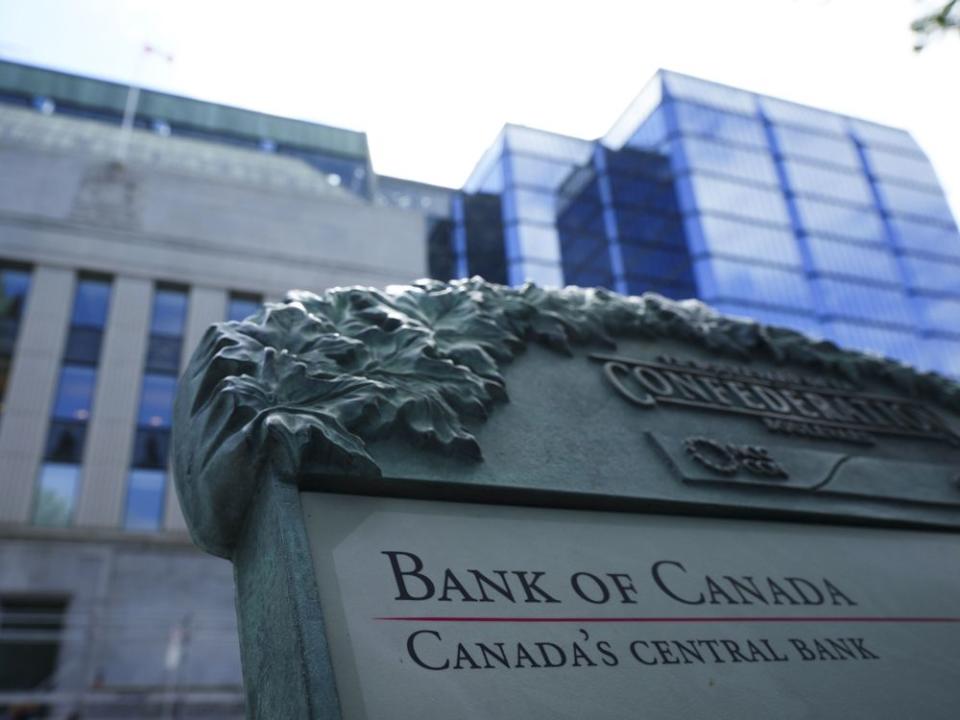Opinion: Bank of Canada should now pause rate hikes and reflect

The Bank of Canada continued its tightening cycle on Wednesday by announcing a 50-basis-point increase in its target for the overnight rate. That came as a surprise to those who expected a 75-basis point increase, but it’s still a hefty hike.
It continues the Bank’s front-loading of its rate increases, which is intended to reduce the scale of future rate hikes. In our view, this latest increase was needed – both to reduce the harm of further increases and to re-anchor inflation expectations – but now the time has come to pause and reflect.
Since the Bank’s September 7th rate boost, the consumer price index (CPI) numbers for August and September have been published. Headline inflation ticked down only a little, from 7.6 per cent in July to 7.0 per cent in August and 6.9 per cent in September. And, as the Bank pointed out, inflation continues to be broad-based, with two-thirds of the items tracked in the CPI experiencing year-over-year inflation above five per cent.
On the other hand, because headline inflation measures price increases over the previous 12 months, these numbers mainly reflect changes that took place a while ago and have little bearing today. To get a better feel of what is going on right now, we can look at shorter frequency changes. One option is to take the month-over-month growth in prices and see what inflation would look like if the latest monthly reading continued for a year.
Doing that back in March, April and May would have given us inflation over the next year as high as 13 per cent. In June, however, the forecast would have been down to 6.5 per cent, in July to 1.6 per cent and in August to just 0.8 per cent — July and August being below the Bank’s official target of two per cent. In September, however, extrapolating the monthly number for 12 months would have produced 4.8 per cent inflation. Excluding food and energy — whose month-to-month changes are especially volatile —annualized inflation fell from six per cent in July to 3.4 per cent in August but rebounded to 5.2 per cent last month.
Another option is to look at the three-month growth rate in prices and use that to derive an annualized rate. Doing that eliminates the September bump, with headline inflation coming in at 2.4 per cent (seasonally adjusted), though without food and energy it was 4.9 per cent. That latest value is high but it does continue a downward trend that started after May’s peak.
That’s all very encouraging. Unfortunately, at the moment food prices are bucking the downward trend. Month-over-month they increased at an annualized pace of 14.8 per cent, the third month in a row above 10 per cent after June’s two-per-cent reading. That said, this increase also contains some inertia: it reflects earlier increases in the costs of inputs such as fertilizer, and the impact of soaring gas prices on the cost of getting food to neighbourhood grocery stores. If these costs have eased, as it seems they have, so should upward pressure on food prices.
There are many signs that the Bank’s tightening cycle is having an impact on the real economy. Housing markets have cooled considerably: the price of new housing actually fell in September. And there will be further impacts down the road as fixed-rate mortgages come to be renewed.
Beyond housing the Bank’s latest Business Outlook Survey indicates a majority of businesses now think the probability of a recession in the next 12 months is at least 50 per cent. An increasing number of Bay Street economists are also predicting a recession sometime next year.
Finally, the growth rates of Canada’s monetary aggregates have plummeted in recent months. Once again, the month-over-month numbers are more telling than 12-month growth rates. The latest available numbers are for August: M2++ fell at an annualized rate of 1.7 per cent, and M1++ at 16.7 per cent, which is troubling. Our recent C.D. Howe Commentary showed that when the Bank is not consistently hitting its inflation target, money growth gives a strong signal of the future evolution of inflation. Decomposing changes in the CPI also provides useful information, but the money supply is a better guide to how overall demand has and will evolve.
The Bank ignored soaring rates of growth of monetary aggregates in 2020 and 2021, which helped fuel soaring inflation earlier this year. It would be just as bad a mistake to ignore today’s negative money growth rates.
By the time of Bank’s next meeting on December 7th we will have only one more month of CPI data (October). At the meeting after that, however, on January 25, 2023, we will have two more releases (for November and December). That will give the Bank plenty of new information to determine whether to resume hiking rates or not. For all these reasons, we think the Bank should hold the overnight rate at 3.75 per cent until then and take stock of the impact its hikes have already had and will soon have on the economy and on inflation.
Steve Ambler, a professor of economics at the Université du Québec à Montréal, is the David Dodge Chair in Monetary Policy at the C.D. Howe Institute, where Jeremy Kronick is director, monetary and financial services research.

 Yahoo Finance
Yahoo Finance 